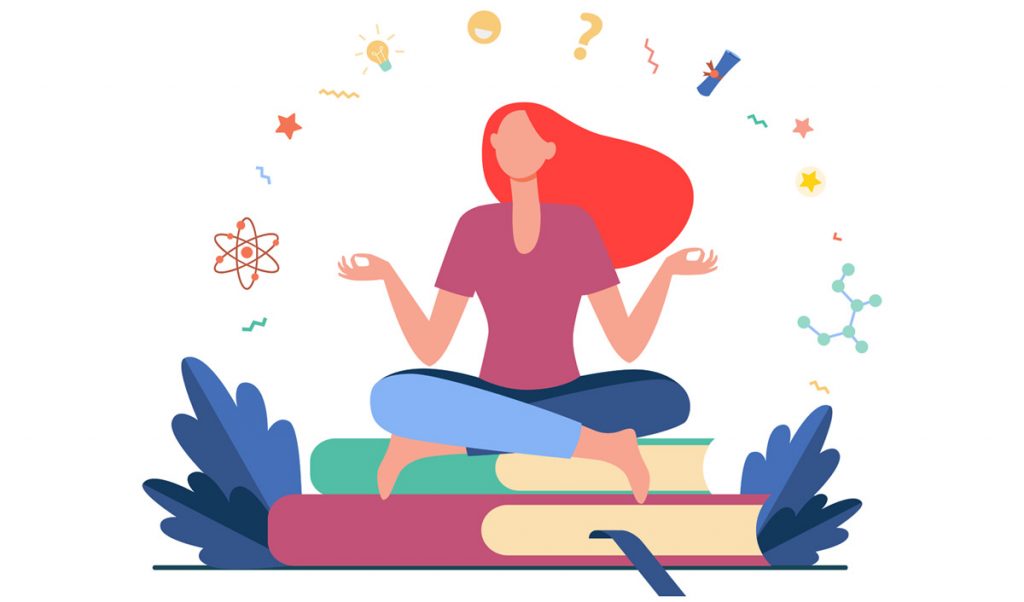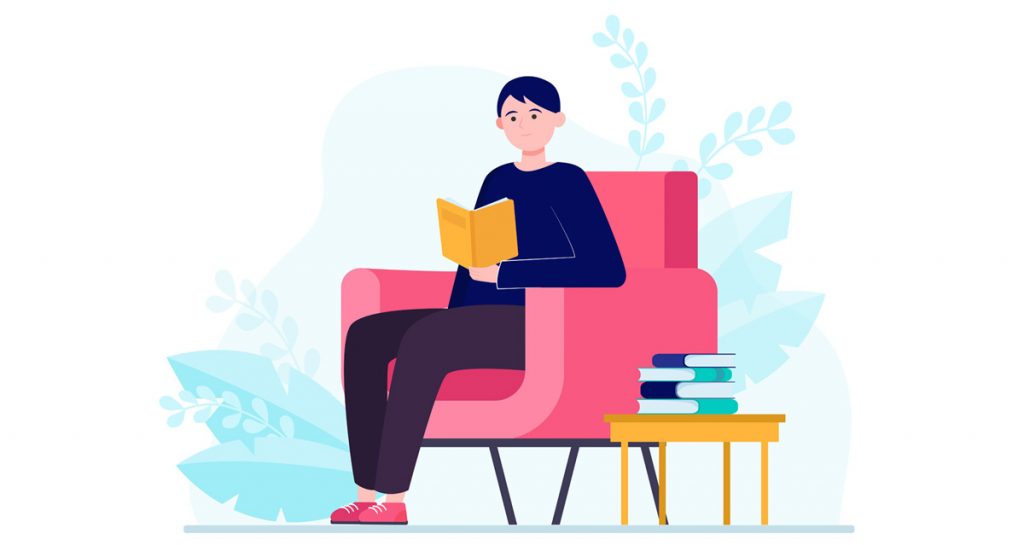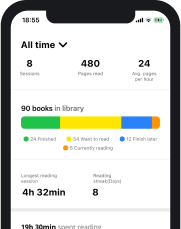While we all take reading for granted in our adult life, it can be somewhat daunting to try and remember the struggles we went through in school while we were learning to read. Struggling to decipher the written words, mumbling letter after letter trying to figure out the words the letters are forming, and slowly figuring out how to improve fluency, learning to read is challenging for most children.
This can only lead us to wonder how the brain learns to read and what the internal mental process involved in acquiring this essential skill is?
The team behind the Basmo reading tracking app is dedicated to exploring every single aspect of reading and since this is a pretty common question in the readers’ community, here’s what we were able to find out!
How the brain learns to read – what’s the process?
The first thing we need to consider when analyzing the process of learning to read is that our brains are not naturally predisposed to this activity. We are not pre-wired for the ability to read and decipher words, translating letters into words and sounds isn’t something we are naturally prepared for. The process of learning to read actually consists of an entire series of rewiring steps and repurposing entire parts of our brain.
The changes that are done by reading in the brain are considerable, and take a relatively long time to complete. That is why reading is generally taught at a young age since that is when the human brain has the most advanced learning abilities. A child’s brain is like a sponge, absorbing a lot more information than we could ever do as adults. As a matter of fact, it has been calculated that learning everything a child learns between the ages 3 and 6 would take us adults close to 60 years.
That being said, let’s go a little more in-depth and see how the parts of the brain involved in reading work together during the learning-to-read process. First, let me reiterate the fact that our ability to read is not something that comes naturally and in order to be able to read, we need to reprogram our brain and use certain parts of the brain that were initially meant to do other things.
Through deliberate practice, we change the purpose of certain parts of the brain and we use them for a different reason than they were developed during our evolution. Leaving aside what a remarkable achievement that is by itself for us as a species, the process of learning to read usually takes more than one year for an average child. That implies that the rewiring that needs to be done is quite complex and takes a long time for all the modifications to the brain anatomy to fully come into effect with the desired result.
Even though the entire process is not completely understood by scientists, here is what is known so far:
Learning to read changes the temporoparietal cortex
This part of our brain has the purpose of helping us understand the spoken word. It is normally used when we process the information that we receive orally from other people. The process of learning to read “borrows” part of our temporoparietal cortex and changes it in a way that allows us to “sound out” what we read and convert the written language into spoken language in our mind.
Reading modifies the inferior frontal cortex
Initially destined to help us speak, the inferior frontal cortex has played an essential role in our evolution. It allows us to form articulated words and speak them out. While this remains its main purpose throughout our lives, learning to read partially changes the inferior frontal cortex to allow us to actually pronounce the words we are reading.
The occipitotemporal cortex adapts to its new role
This part of the brain is responsible for adapting our vision to recognize faces and objects. Looking at something and knowing what it is, or looking at someone and knowing who that represents a very complex ability that would not be possible without the processing done in the occipitotemporal cortex.
This essential part of our brains is also changed during the process of learning to read. Not only will we still be able to recognize faces and objects, but through the modifications that are made, we will also be able to actually recognize words. This is a completely different thing than reading certain words. The ability to recognize a word, which is facilitated by the adaptability of the occipitotemporal cortex, represents the process of knowing what a word is without actually reading it.
We remember and become able to recognize a word without reading it, through its shape, size, number of letters, and general appearance.
These modifications happen somewhat differently for people with dyslexia, a learning disability that seems to become increasingly popular, unfortunately. For people who suffer from dyslexia, the rewiring of the brain in the process of learning to read doesn’t happen exactly as it is supposed to. Even though researchers and scientists have been hard at work in the last couple of decades to try and make sense of this odd disability, the exact explanation for its existence and what people can do to prevent its onset are still not completely understood.
As you can see, the changes our brain has been forced to go through so we can learn how to read are extensive, and if we try and look back to the days when we were struggling to gain this ability, we can easily realize how important it is to no take it for granted in our adult years. The reading brain has gone through a very complex process to become what it is today, so we should at least make sure to take full advantage of the fact that we were lucky enough to learn how to read. You would be surprised to learn how many people remain illiterate throughout their entire lives. That is partially why we created Basmo, to help you take full advantage of this amazing gift we’ve been blessed with: reading.
Basmo was created with a clear purpose to help you become a better, more efficient, and more accomplished reader, which in turn can make you smarter. The philosophy behind the app relies on our team’s understanding of the needs a modern reader has. That is why the features our app will give you access to have the ability to completely change the way you read.
Here are a couple of reasons why Basmo can work wonders for your reading and the brain development that comes along with it:
Basmo allows you to be a more organized reader
Success is reserved for those who work for it, and working to achieve something can only be effective if the effort is doubled by a clear structure.
Basmo can help you create a reading schedule you will also be able to follow.
You can select the days of the week when you know you have some spare time and even different times for each day’s reading session.
The schedule is easy to set and modify, and the app will also remind you of any upcoming scheduled reading sessions so you don’t forget.
Basmo encourages you to set clear goals
Since reading has a powerful series of effects on the brain even beyond the process of learning to read, it’s easy to understand why most of us want to read more. The motivation to put the effort into something is a fragile thing, and we know it too well. Luckily, we also know that setting clear and achievable goals is a good way to keep a steady pace towards achieving what we’ve put our minds to.
With Basmo, you can set two different kinds of goals: a daily goal for the number of minutes you spend reading and a yearly goal for the number of books you want to go through by the time the year is over. You can select either one or both.
The app is going to track your progress towards meeting them and you will be able to see how well you’re doing and how much you still need to work in order to achieve the goals through comprehensive animations.
Basmo allows you to keep your TBR neat and tidy
A messy reading list can only lead you to one thing: chaos. With Basmo, you can easily create, edit, modify, and manage as many different reading lists as you want or need.
Titles are easy to add and remove to and from lists, and you can even create personalized lists for different purposes. For example, if you want to separate your pleasure reading from mandatory reading, you can do this easily through two separate reading lists within the app.
Mindful reading? No problem with Basmo!
Mindfulness is something that each and every one of us should be practicing for a better life. When it comes to reading, our belief is that mindfulness should always play a part in the experience. That is why our app has been designed to support you throughout the entire process.
From the way you schedule your sessions, the ability to take notes and keep a reading journal, to keeping your feelings in check, Basmo can make the experience a lot better.
What part of the brain controls reading
Reading is a much more complex process than you would be inclined to think. A large part of the brain is involved in reading, which is why reading is also a very effective way to keep your brain in tip-top shape throughout your life.
Reading constantly creates new pathways in your neuronal network and strengthens the already existing ones. The process of reading involves, among other things, the temporal lobe, Broca’s area in the frontal lobe, as well as the angular and supramarginal gyrus.
The temporal lobe is where phonological awareness takes place, as well as the actual decoding of sounds. This part of the brain helps us sound out words as we read them.
Broca’s area is responsible for speech and language comprehension and gets involved mainly in the process of reading out loud, giving us the ability to speak out the sounds that the letters and words we read should be generating.
The angular and supramarginal gyrus are responsible for creating connections in the brain that help us understand the shapes of the letters and make sense of the way they are organized on paper to create words.
On top of this, reading engages a huge number of white matter tracts inside our brain, which get activated to help us understand and learn new concepts. They create the pathways that later become the knowledge we possess.
Final thoughts
Reading is an incredibly complex process, one that takes years of practice to master. Even though the brain’s anatomy gets slightly modified by the process of learning to read, in the end, the brain benefits tremendously from a lifetime of reading.
How the brain learns to read is not something that scientists understand completely, but thanks to years of research and thousands of MRI scans, they’ve come pretty close. What’s of utmost importance is to never forget that we are blessed with an amazing ability, one that we should be constantly taking full advantage of. And to do that, you should give Basmo a chance.
Give Your Reading Experience
An Extra Boost With Basmo
Track the books you read, monitor the time you spend reading and keep notes on your reading habits and how it makes you feel. You can set yourself targets for the time you spend reading and you can get notified whenever you’re behind on your reading time.







